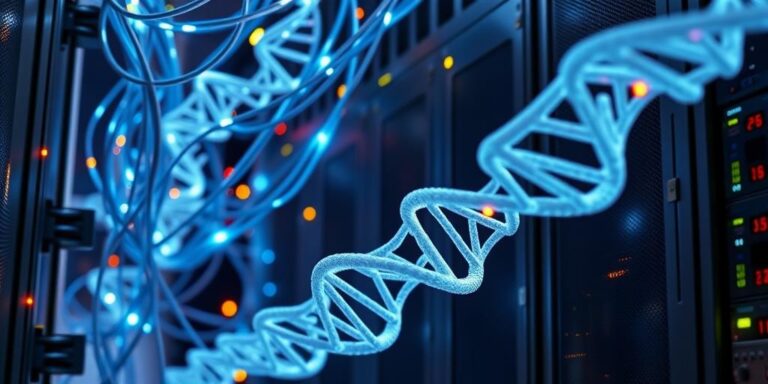DNA Data Storage: Archiving Humanity’s Knowledge (2035 Reality?)
Imagine a world where all of humanity’s knowledge – every book, movie, song, and scientific paper – is stored not on massive server farms, but within the microscopic strands of DNA. This isn’t science fiction; it’s a rapidly developing field with the potential to revolutionize data storage as we know it. Let’s explore the current state of DNA data storage and what the future might hold, particularly focusing on the potential reality of this technology by 2035.
The Promise of DNA Data Storage
Traditional data storage methods, like hard drives and solid-state drives, face limitations in terms of capacity, energy consumption, and longevity. DNA, on the other hand, offers several compelling advantages:
- Incredible Density: DNA can store an astonishing amount of information in a tiny space. Theoretically, a cubic millimeter of DNA could hold hundreds of terabytes of data.
- Long-Term Durability: Under the right conditions, DNA can last for hundreds of thousands of years. This makes it ideal for archival storage.
- Low Energy Consumption: Once the data is written into DNA, it requires virtually no energy to maintain.
How Does It Work?
The process of storing data in DNA involves several key steps:
- Encoding: Digital data (0s and 1s) is translated into the four-letter alphabet of DNA: adenine (A), guanine (G), cytosine (C), and thymine (T).
- Synthesis: Scientists use DNA synthesizers to create strands of DNA that represent the encoded data. These strands are typically short, around a few hundred bases long.
- Storage: The synthesized DNA is stored in a dry, cool, and dark environment to ensure its longevity.
- Sequencing: To retrieve the data, the DNA is sequenced, and the sequence is translated back into digital information.
Current Challenges
Despite its immense potential, DNA data storage faces significant hurdles:
- Cost: Synthesizing and sequencing DNA is currently expensive, although costs are decreasing rapidly.
- Speed: Writing and reading data from DNA is much slower than traditional methods.
- Error Rate: Errors can occur during synthesis and sequencing, requiring robust error-correction mechanisms.
- Scalability: Scaling up the process to handle massive amounts of data is a major challenge.
The 2035 Outlook: A Realistic Assessment
Given the current pace of development, what can we realistically expect by 2035?
- Cost Reduction: We can anticipate significant cost reductions in DNA synthesis and sequencing, making the technology more accessible.
- Improved Speed and Accuracy: Advances in nanotechnology and microfluidics will likely lead to faster and more accurate DNA writing and reading processes.
- Niche Applications: DNA data storage may find niche applications in archival storage for institutions like libraries, museums, and government agencies.
- Limited Commercial Adoption: While widespread commercial adoption is unlikely by 2035, we may see pilot projects and specialized services emerge.
Long-Tail Keywords:
- DNA data storage technology
- Future of data archiving with DNA
- DNA storage challenges and solutions
- Cost-effective DNA data storage
- DNA data storage 2035 predictions
The Future is in Our Genes (Literally)
DNA data storage holds tremendous promise for addressing the growing data storage needs of humanity. While challenges remain, the rapid pace of innovation suggests that this technology could become a viable solution for long-term archival storage in the coming years. By 2035, we may not be storing all our cat videos in DNA, but the groundwork will be laid for a future where our digital world is encoded in the very building blocks of life.




